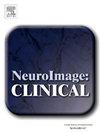Thalamic iron in multiple sclerosis: Waning support for the early-rise late-decline hypothesis
IF 3.6
2区 医学
Q2 NEUROIMAGING
引用次数: 0
Abstract
Background
Studies of thalamic iron levels in multiple sclerosis (MS) have yielded variable findings, potentially due to differences in study cohorts. For example, studies in relatively young cohorts (average ages below 40 years) have reported elevated susceptibility in people with MS (pwMS), whereas studies in older cohorts (above 40 years) found decreased susceptibility.
Objective
To test the “early-rise late-decline” hypothesis, which posits that age differences in study cohorts are responsible for conflicting findings regarding thalamic susceptibility in MS.
Methods
We chose to replicate one of the previous studies that showed evidence of elevated thalamic iron concentrations in younger pwMS (Rudko et al., 2014). We also replicated a study involving older pwMS (Pudlac et al., 2020) to serve as a control. We assessed thalamic susceptibility using the QSM processing and analysis methodology outlined by Rudko et al.
Results
Although cohort characteristics, QSM processing, and analytical methods were closely matched, we found significantly lower thalamic susceptibility in the younger pwMS compared to controls (−1.1 ± 7.8 vs. 5.4 ± 6.1 ppb; effect sizes: −0.35 to −0.91). Study outcomes were robust across a wide range of regularization parameters, with effect size differences influenced by background field removal regularization. A similar pattern was observed in the older cohort, where thalamic susceptibility was again lower in pwMS compared to controls (4.0 ± 9.5 vs. 9.6 ± 10.7 ppb; effect size: −0.55).
Conclusions
Our findings contradict the “early rise” hypothesis of thalamic iron levels in pwMS. The consistency of our results across multiple analyses suggests that QSM processing artifacts are unlikely to explain previous reports of increased thalamic iron. Instead, these variations may stem from demographic or clinical differences, such as geographical factors and treatment regimens.
多发性硬化症中的丘脑铁:对早起晚落假说的支持逐渐减弱
背景:多发性硬化症(MS)丘脑铁水平的研究产生了不同的结果,可能是由于研究队列的差异。例如,在相对年轻的队列(平均年龄低于40岁)中进行的研究报告了多发性硬化症(pwMS)患者的易感性升高,而在老年队列(40岁以上)中进行的研究发现易感性降低。目的验证“早起晚落”假说,该假说认为研究队列的年龄差异导致了ms丘脑易感性的相互矛盾的发现。方法我们选择重复先前的一项研究,该研究显示了年轻pwMS丘脑铁浓度升高的证据(Rudko等人,2014)。我们还重复了一项涉及较旧pwMS的研究(Pudlac et al., 2020)作为对照。结果:虽然队列特征、QSM处理和分析方法密切匹配,但我们发现年轻pwMS患者的丘脑易感性明显低于对照组(- 1.1±7.8 vs. 5.4±6.1 ppb;效应值:−0.35 ~−0.91)。研究结果在广泛的正则化参数范围内是稳健的,效应大小差异受背景场去除正则化的影响。在老年队列中也观察到类似的模式,与对照组相比,pwMS的丘脑易感性再次降低(4.0±9.5 vs. 9.6±10.7 ppb;效应量:−0.55)。结论研究结果与脑缺血综合征丘脑铁水平的“早起”假说相矛盾。我们的结果在多个分析中的一致性表明,QSM处理伪影不太可能解释先前报道的丘脑铁增加。相反,这些差异可能源于人口统计学或临床差异,如地理因素和治疗方案。
本文章由计算机程序翻译,如有差异,请以英文原文为准。
求助全文
约1分钟内获得全文
求助全文
来源期刊

Neuroimage-Clinical
NEUROIMAGING-
CiteScore
7.50
自引率
4.80%
发文量
368
审稿时长
52 days
期刊介绍:
NeuroImage: Clinical, a journal of diseases, disorders and syndromes involving the Nervous System, provides a vehicle for communicating important advances in the study of abnormal structure-function relationships of the human nervous system based on imaging.
The focus of NeuroImage: Clinical is on defining changes to the brain associated with primary neurologic and psychiatric diseases and disorders of the nervous system as well as behavioral syndromes and developmental conditions. The main criterion for judging papers is the extent of scientific advancement in the understanding of the pathophysiologic mechanisms of diseases and disorders, in identification of functional models that link clinical signs and symptoms with brain function and in the creation of image based tools applicable to a broad range of clinical needs including diagnosis, monitoring and tracking of illness, predicting therapeutic response and development of new treatments. Papers dealing with structure and function in animal models will also be considered if they reveal mechanisms that can be readily translated to human conditions.
 求助内容:
求助内容: 应助结果提醒方式:
应助结果提醒方式:


